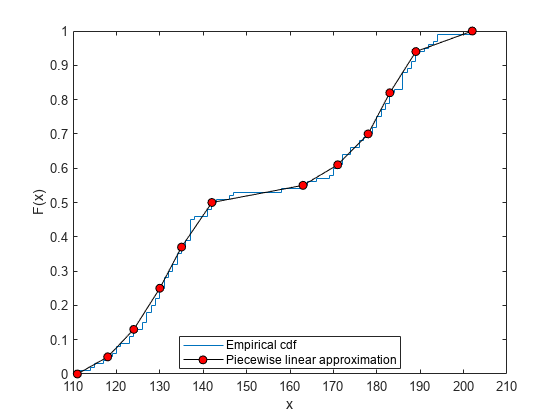PiecewiseLinearDistribution
Piecewise linear probability distribution object
Description
A PiecewiseLinearDistribution object consists of a model
description for a piecewise linear probability distribution.
The piecewise linear distribution is a nonparametric probability distribution created using a piecewise linear representation of the cumulative distribution function (cdf). The options specified for the piecewise linear distribution specify the form of the cdf. The probability density function (pdf) is a step function.
The piecewise linear distribution uses the following parameters.
| Parameter | Description |
|---|---|
x | Vector of x values at which the cdf changes slope |
Fx | Vector of cdf values that correspond to each value in
x |
Creation
Create a PiecewiseLinearDistribution probability distribution with
specified parameter values object using makedist.
Properties
Object Functions
cdf | Cumulative distribution function |
icdf | Inverse cumulative distribution function |
iqr | Interquartile range of probability distribution |
mean | Mean of probability distribution |
median | Median of probability distribution |
pdf | Probability density function |
plot | Plot probability distribution object |
random | Random numbers |
std | Standard deviation of probability distribution |
truncate | Truncate probability distribution object |
var | Variance of probability distribution |
Examples
Version History
Introduced in R2013a


